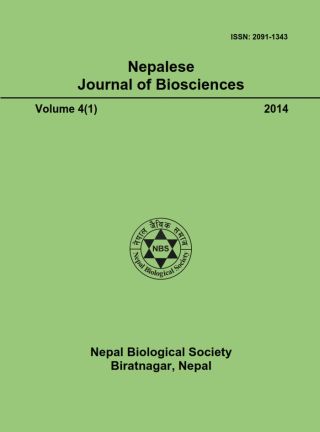Macrofungi in community managed forest, Rupandehi district, Nepal: An ethnomycological study
DOI:
https://doi.org/10.3126/njbs.v4i1.41696Keywords:
Food value, local-medicines, macrofungal diversity, socio-economyAbstract
This investigation explores the macrofungi with their identification and documentation of indigenous knowledge. The study area occupies 633 hector and lies within a narrow limit of altitude between 225 and 265msl. The collected samples represented 31 species of Basidiomycetes belonging to 7 orders, 17 families and 22 genera. The dried specimens are deposited in the Tribhuvan University Central Department of Botany, Pathology Unit, Kathmandu, Nepal. The area embraces many mycophagous ethnic groups. The mycoelements prevailing in this area need sustainable development.




